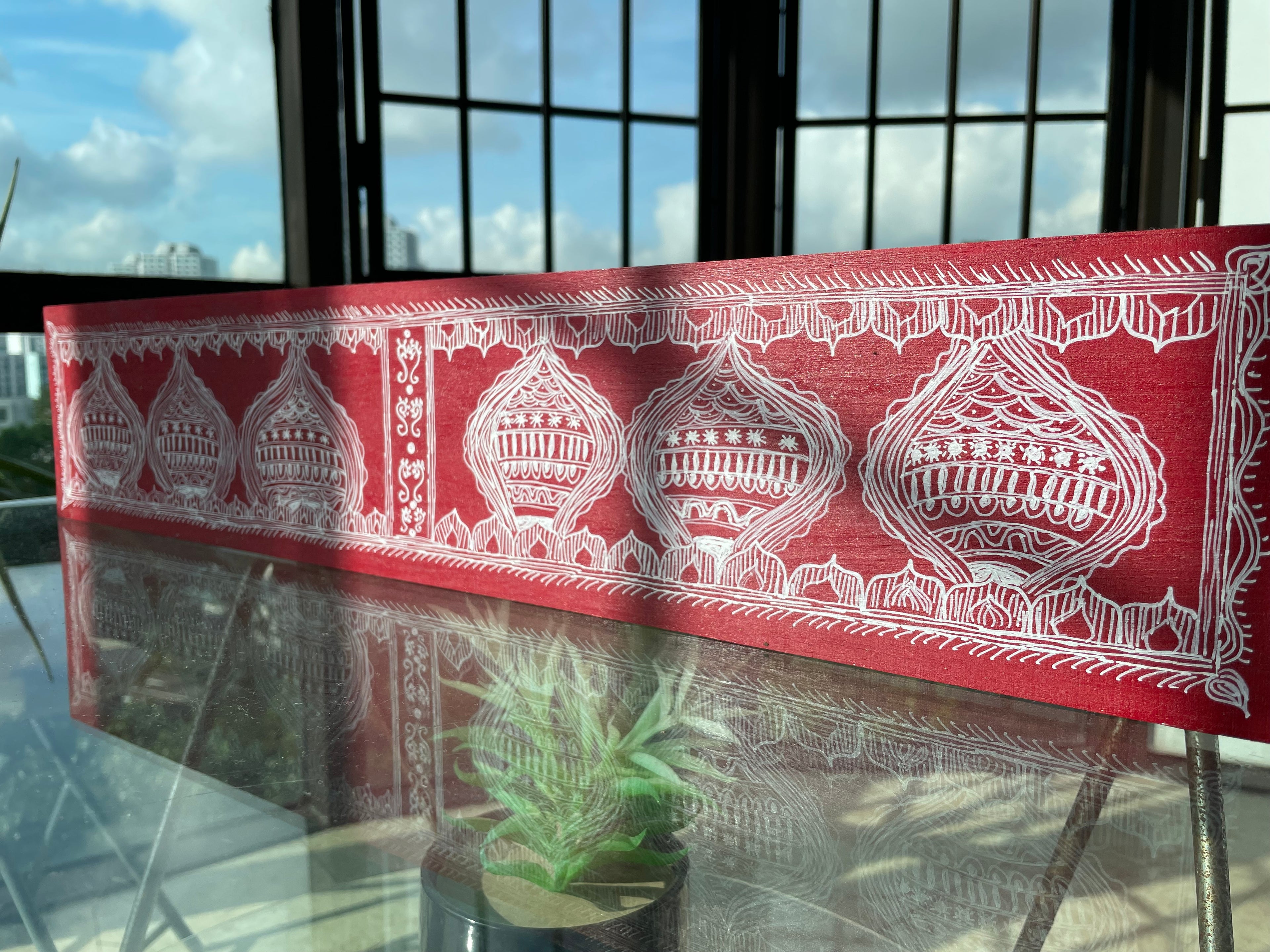

THE STORY OF AIPAN
Aipan (Ēpaṇ) is an almost 1000 years old religious folk art native to the Kumaon region of Uttarakhand, India. It reflects deep harmony with nature. The motifs of the sun, the moon, water, lotus, conch shell, parrots, fish and animals are made with various designs and patterns. The word Aipan is a derivative of Arpan, a commonly used word for ‘Likhai (writing)’ even though it is made from fingers.
Aipan is practiced by women to welcome gods and goddesses and was an art very common at the Joshi household. These women of Kumaon are the designers of these intricate patterns that adorn the entrances of their homes, worshiping places (also known as Pooja Ghars) and courtyards. Practitioners believe that it invokes a divine power which brings about good fortune and deters evil.
Aipan was first made with rice paste and Gheru, an earthy red color. Gheru was easily available and rice was a precious commodity. The colors gheru and red stand for fire and energy in life. These patterns were painted over a gheru painted surface, and later the use of synthetic and acrylic colors became the contemporary form of this art. Viswar (rice paste) was used as white paint over the surface. It symbolizes prosperity and wealth. In traditional Aipan, religious symbols such as the goddess of wealth, Laxmi, are incorporated.
